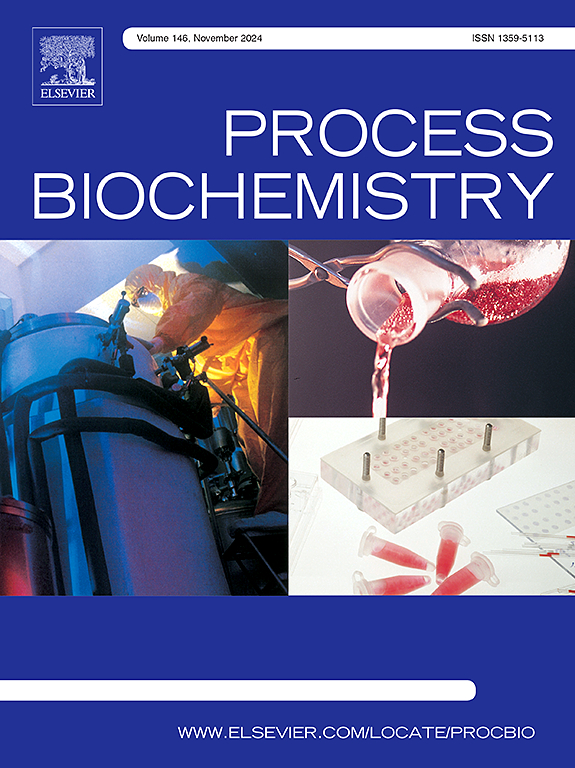Investigating the interaction of preosteoblast cells with poly-L lysine surface-modified chitosan/hydroxyapatite scaffolds and their potential applications in bone tissue engineering
IF 4
3区 生物学
Q2 BIOCHEMISTRY & MOLECULAR BIOLOGY
引用次数: 0
Abstract
Bone is a multifunctional organ that undergoes constant structural and biological changes. In cases of damage due to trauma, cancer, infection or hormonal imbalances, medical intervention is required for bone regeneration. This study aims to develop a tissue scaffold that promotes bone tissue regeneration by enhancing cell adhesion, proliferation, and mineralization. For this purpose, tissue scaffolds with varying contents were produced using chitosan (Ch), hydroxyapatite (HA), and poly-L-lysine (PLL) as scaffold materials by freeze-drying method and characterized. In studies conducted to evaluate the biological activities of the scaffolds on MC3T3-E1 preosteoblast, the PLL-Ch/HA 1:2 scaffold exhibited approximately 20 % higher cell viability than the control on days 3 and 7 of extract analysis. In cells cultured on the scaffold, PLL-coated Ch/HA scaffolds showed a greater proliferative effect than uncoated Ch/HA scaffolds on day 7 of culture, resulting in a significant increase in cell viability. Furthermore, the observed increase in calcification and mineralization when cells were cultured on PLL-modified scaffolds could be attributed to PLL promoting cell adhesion and proliferation, resulting in increased calcium deposition. The surface modification of Ch/HA composite scaffolds with PLL has revealed optimal performance in bone tissue engineering due to their favorable performance.
聚l赖氨酸表面修饰壳聚糖/羟基磷灰石支架与成骨前细胞的相互作用及其在骨组织工程中的潜在应用
骨是一个多功能器官,经历着不断的结构和生物学变化。在创伤、癌症、感染或激素失衡造成损伤的情况下,需要进行医疗干预以进行骨再生。本研究旨在开发一种通过增强细胞粘附、增殖和矿化来促进骨组织再生的组织支架。为此,以壳聚糖(Ch)、羟基磷灰石(HA)和聚l -赖氨酸(PLL)为支架材料,采用冷冻干燥法制备了不同含量的组织支架,并对其进行了表征。在评估支架对MC3T3-E1成骨前细胞生物活性的研究中,在提取物分析的第3天和第7天,PLL-Ch/HA 1:2支架的细胞活力比对照高约20% %。在支架上培养的细胞中,在培养第7天,pll包被的Ch/HA支架比未包被的Ch/HA支架表现出更大的增殖作用,导致细胞活力显著提高。此外,在PLL修饰的支架上培养细胞时,细胞的钙化和矿化程度增加,这可能是由于PLL促进了细胞的粘附和增殖,导致钙沉积增加。PLL对Ch/HA复合支架进行表面改性,由于其良好的性能,在骨组织工程中显示出最佳的性能。
本文章由计算机程序翻译,如有差异,请以英文原文为准。
求助全文
约1分钟内获得全文
求助全文
来源期刊

Process Biochemistry
生物-工程:化工
CiteScore
8.30
自引率
4.50%
发文量
374
审稿时长
53 days
期刊介绍:
Process Biochemistry is an application-orientated research journal devoted to reporting advances with originality and novelty, in the science and technology of the processes involving bioactive molecules and living organisms. These processes concern the production of useful metabolites or materials, or the removal of toxic compounds using tools and methods of current biology and engineering. Its main areas of interest include novel bioprocesses and enabling technologies (such as nanobiotechnology, tissue engineering, directed evolution, metabolic engineering, systems biology, and synthetic biology) applicable in food (nutraceutical), healthcare (medical, pharmaceutical, cosmetic), energy (biofuels), environmental, and biorefinery industries and their underlying biological and engineering principles.
 求助内容:
求助内容: 应助结果提醒方式:
应助结果提醒方式:


